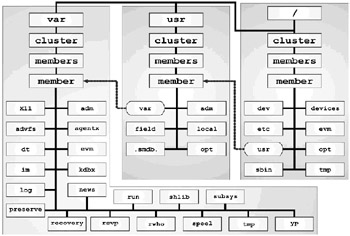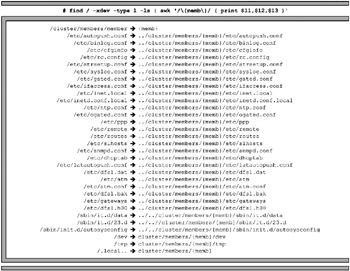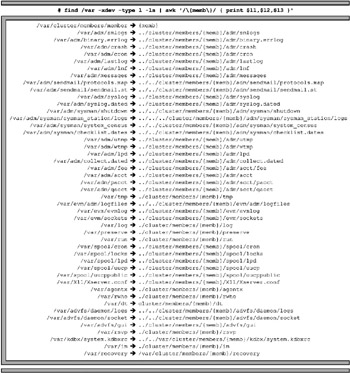6.3 Is it Member-Specific or Cluster-Common? (redux)
6.3 Is it Member-Specific or Cluster-Common? (redux)
Let's take a closer look at the root (/), /usr, and /var directories and see what has been moved to the "member-specific status". Figure 6-5 shows the member0 directory hierarchy. Note that we use the term "member" in the figure since this directory could pertain to any member in a cluster.

Figure 6-5: The member0 directory hierarchy
The next three tables use the find(1) command to locate symbolic links in the root file system. The awk(1) command searches the output from the find command for a CDSL and prints out the link and the link's destination. Table 6-2 shows the CDSLs for the root (/) partition.
|
|
In Table 6-3, we explore the /usr file system. Note: we have edited the following output so that all of the ".sts" files in "/usr/.smdb." are shown as one entry, "/usr/.smdb./*.sts -> ../cluster/members/{memb}/.smdb./*.sts".
|
|
In the final table, Table 6-4, the /var file system is displayed.
|
|
EAN: 2147483647
Pages: 273


